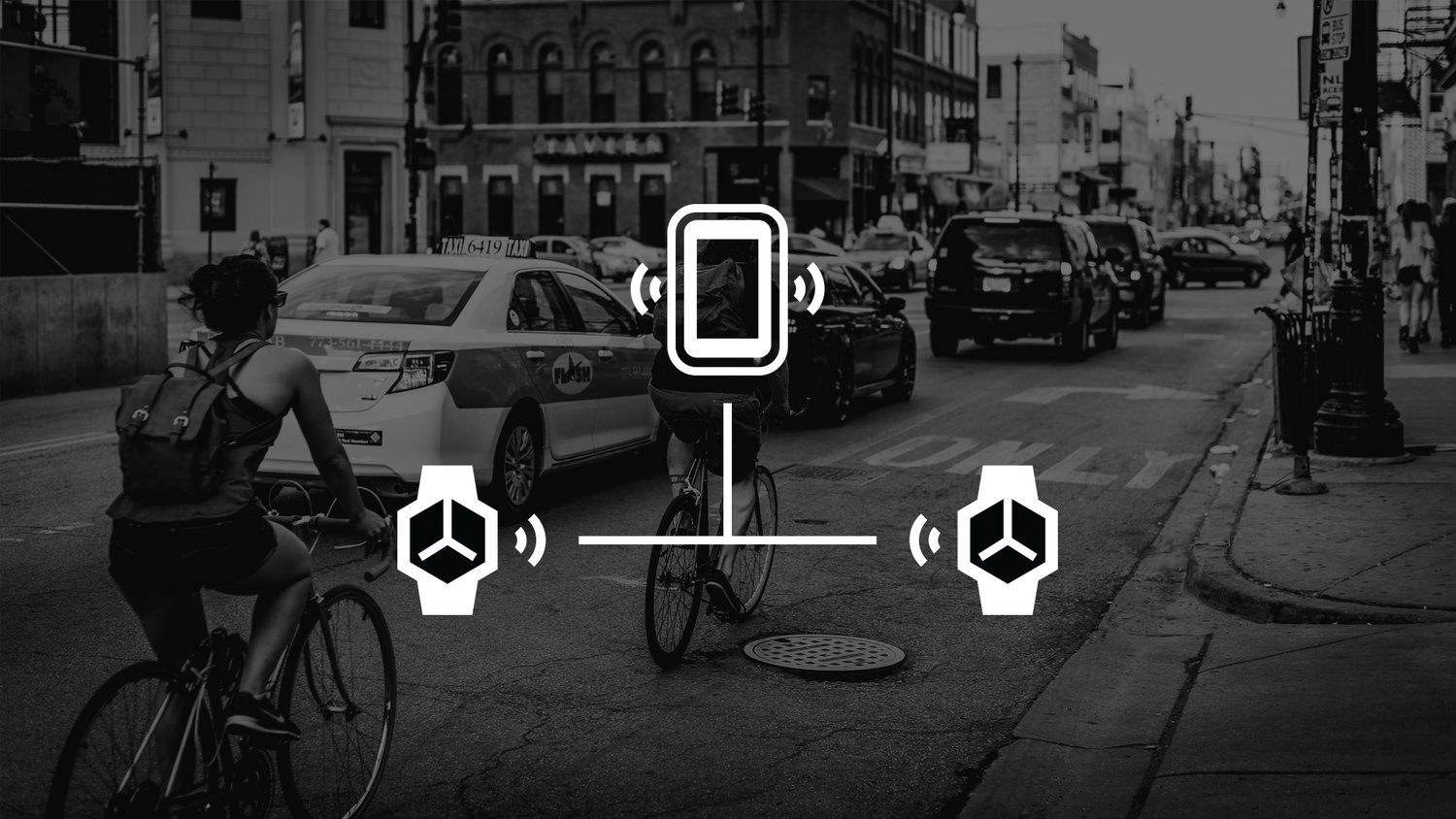HALO - Wearable Navigation for Cyclists
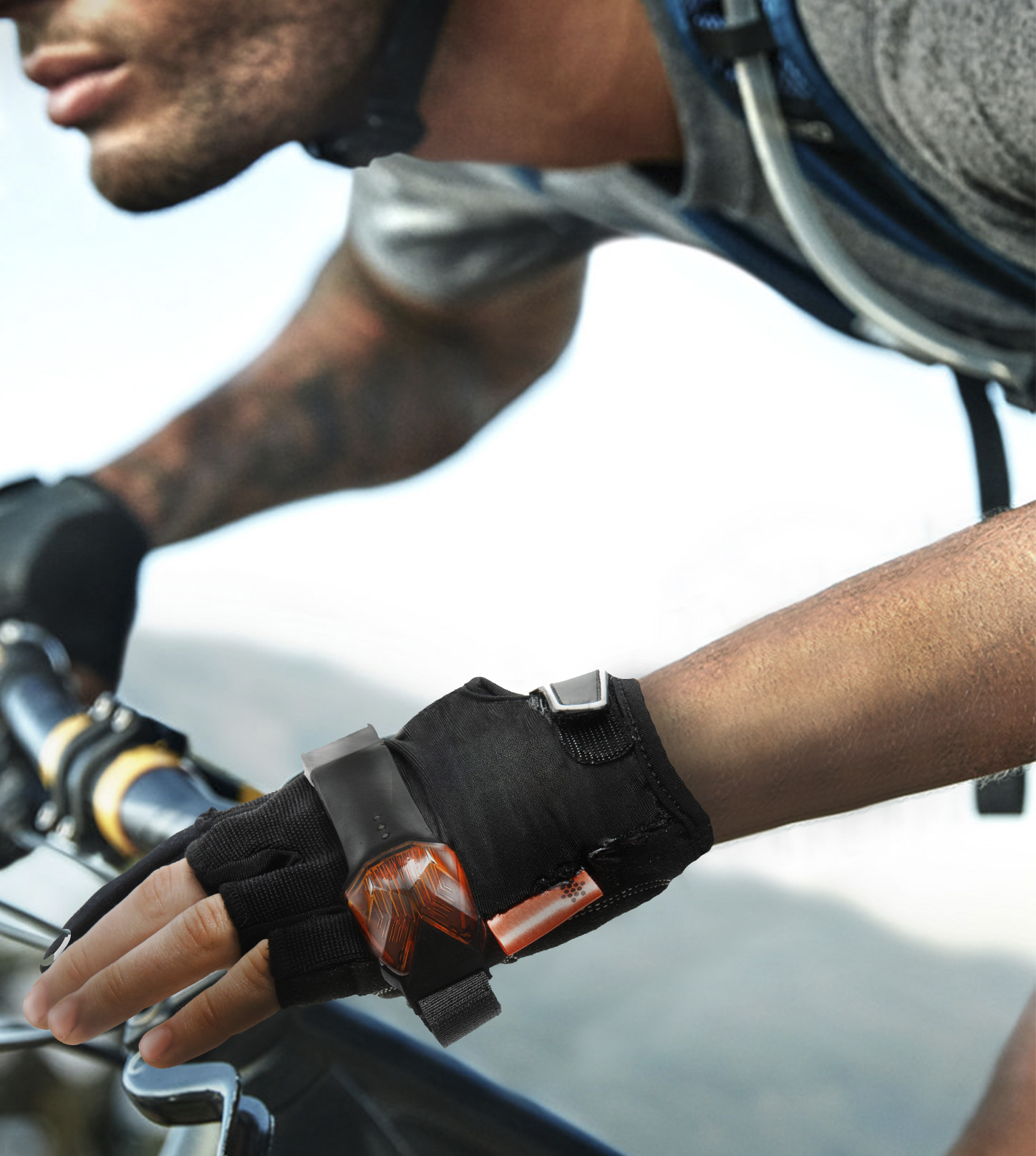
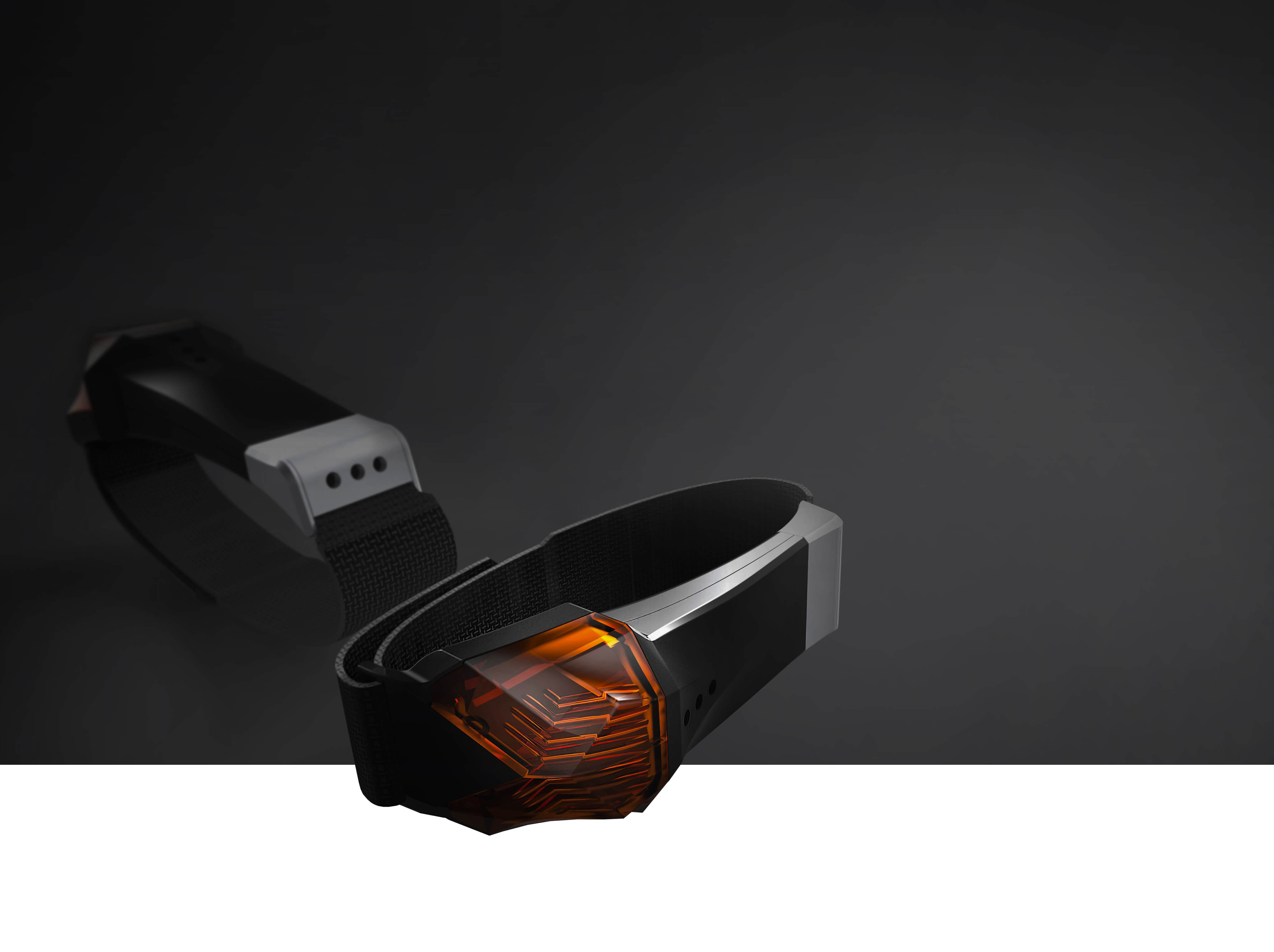
HALO is a pair of hand-worn wearables that provide enhanced road functionality, including non-visual navigation, indicators, incident detection, and fitness data.
Find your path.
Enter your destination and we’ll find the most cycle-friendly route for you to get there. Receive directions as you cycle through simple vibration and indirect visuals (using peripheral vision) on each hand, guiding you there.
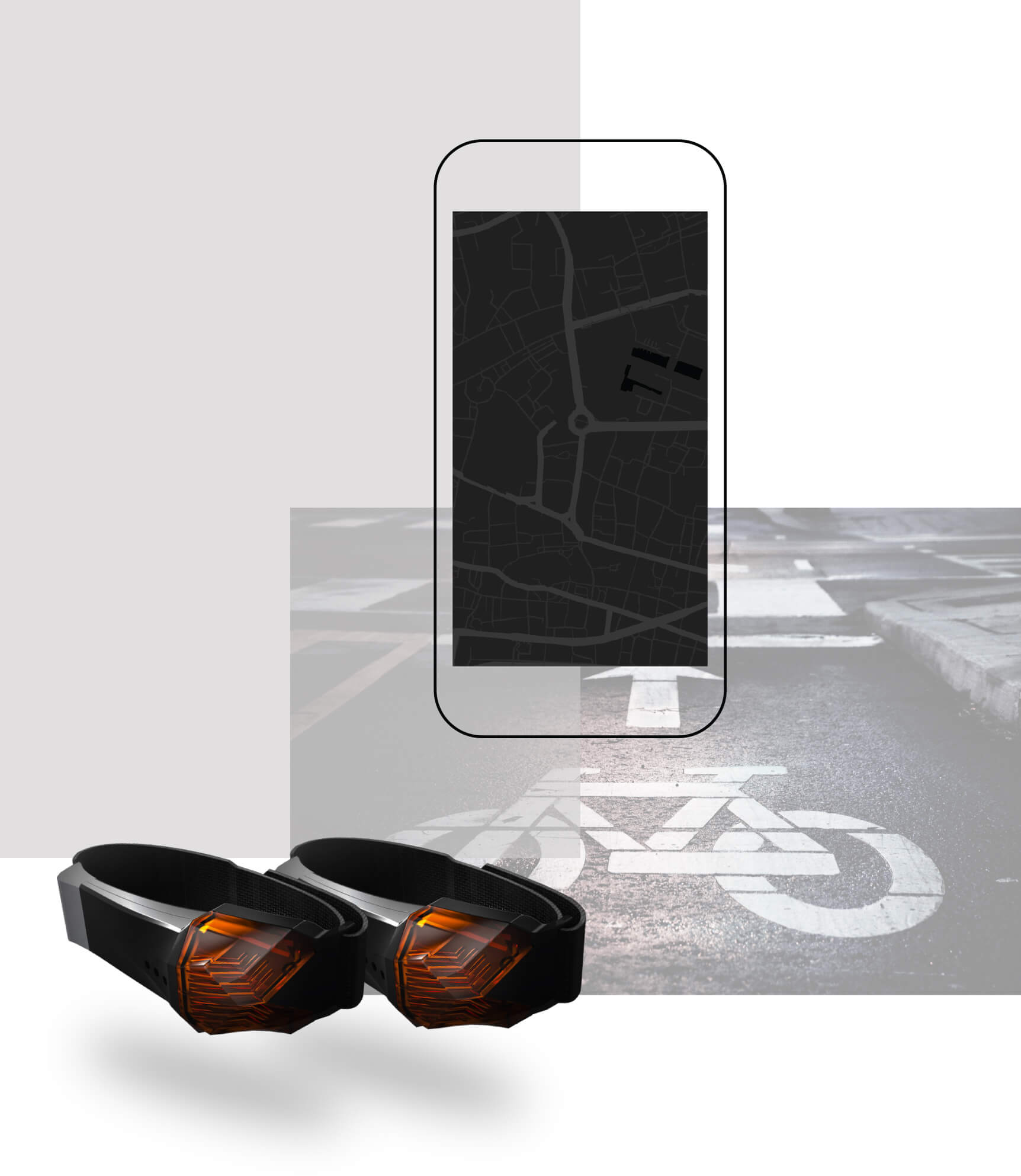
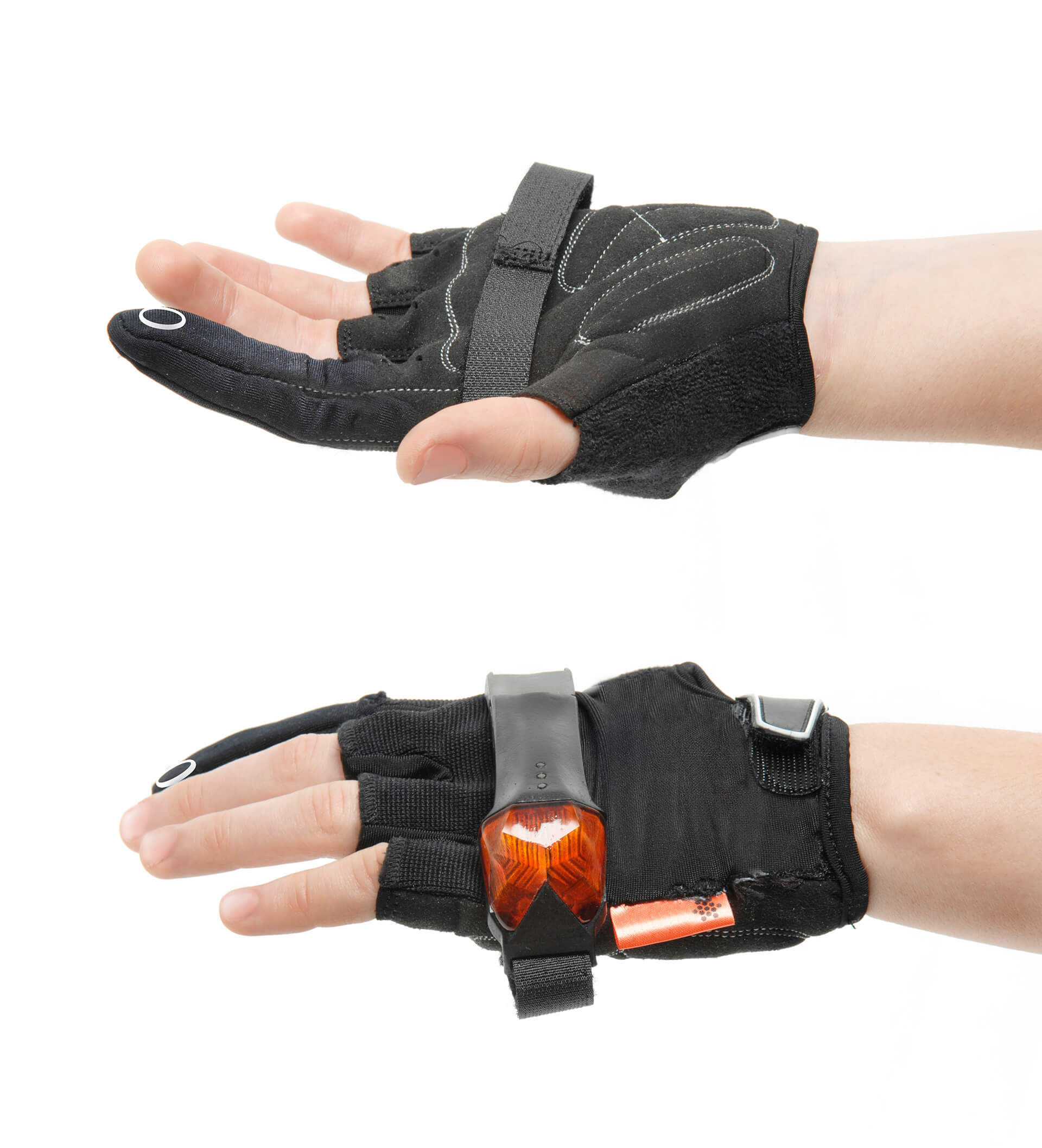
Zero distraction.
Hands (always) on: Control the navigation and use indicators, without ever taking hands off the handlebars, through a new kind of hand-worn, fabric interface.
Eyes on the road: Stay focused on the road, with navigation that doesn't require direct eye contact - only peripheral vision and simple vibration.
Communicate.
Clearly communicate which direction you intend to turn, with in-built indicators. Easy for motorists to see, clear for them to understand.

The journey:
Defining the problem:
Over 20,000 cycle road accidents happen a year in the UK.
Conversations with local councils and road safety commissioners in Leicestershire and London highlighted that this is largely due to lack of communication between cyclist and motorist about the cyclist's intention to turn.
However, interviews with novice & commuter cyclists also highlighted a secondary issue - not knowing where dangerous junctions and accident blackspots are, or where to find cycle lanes in major cities.
Areas of opportunity
- A guide to safer routes across a city
- A way for cyclists to communicate their intention to turn
- Some kind of reactive system, if a cyclist has been in an incident

Early exploration
Communicating intention to turn is a solved problem in the motoring world - indicators - and it only made sense to utilise this existing framework rather than creating another model for road-users to learn. Rough, early-stage prototyping highlighted that the cyclist's hands are visible from a wide variety of angles, and if indicating, the active device would be on the correct side during the turn. Further to this, hands are already used by cyclists in indicating.
A simultaneous exploration of existing navigation products and interviews with cyclists also highlighted that a visual solution is too distracting: maps take several moments to understand, which is too long to have eyes off the road. The existing in-car solution to this is turn-by-turn verbal instruction, however this isn't suitable for a cyclist, who isn't inside a sealed space, and also cannot afford to not hear their surroundings (e.g. via earphones). I began exploring alternative approaches - vibration and simple peripheral vision. Experience prototyping quickly identified that for vibration/haptics, the clearest point of placement was on the hands or wrists of the cyclist, as they are more sensitive, are directly engaged with steering, and are part of the user's mental model of spatially mapping left and right. As for simple peripheral visuals, they would obviously need to be in the cyclist's field of view, which meant either on the handlebar or arms as well.
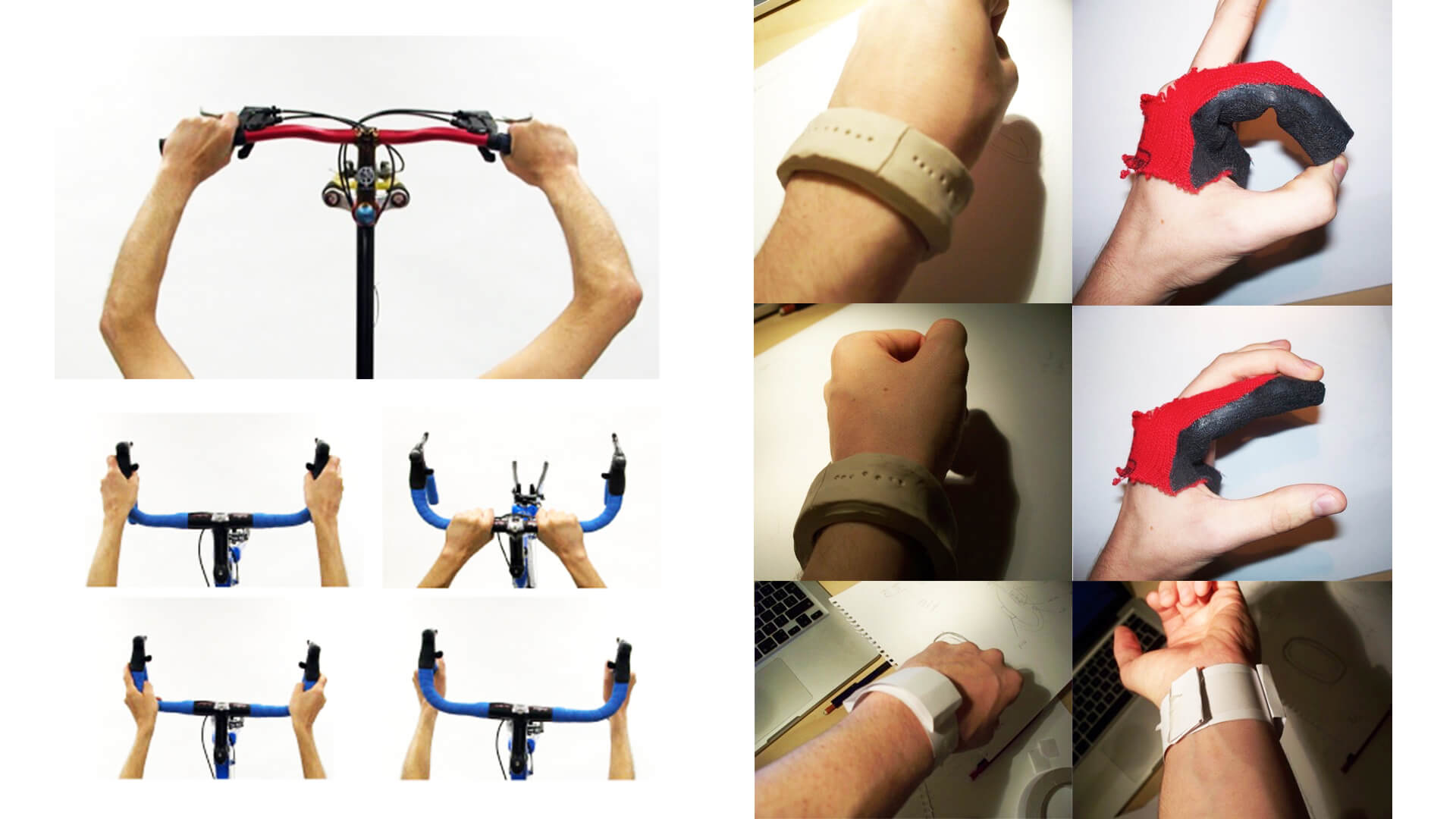
Form factor definition
With these starting points, the ideas were exploded into dozens of concepts. Co-creation and selection with champion users from Loughborough University's cycling team helped reduce the number of concepts down, eliminating those that wouldn't work or appeal. The user group were most engaged by the combination of navigation information and indicators, and also had specific form requirements; it couldn't be bulky, heavy or awkward to interact with - which would pose a challenge with the chunky components & battery required for navigation. Some early trials of directional feedback through LEDs attached to the hand and vibration motors on the hand or wrist, showed that occasionally either one of these two feedback sources might be overlooked, for example if there was a visual or tactile distraction/external stimulus. The best solution would be a combination of both.
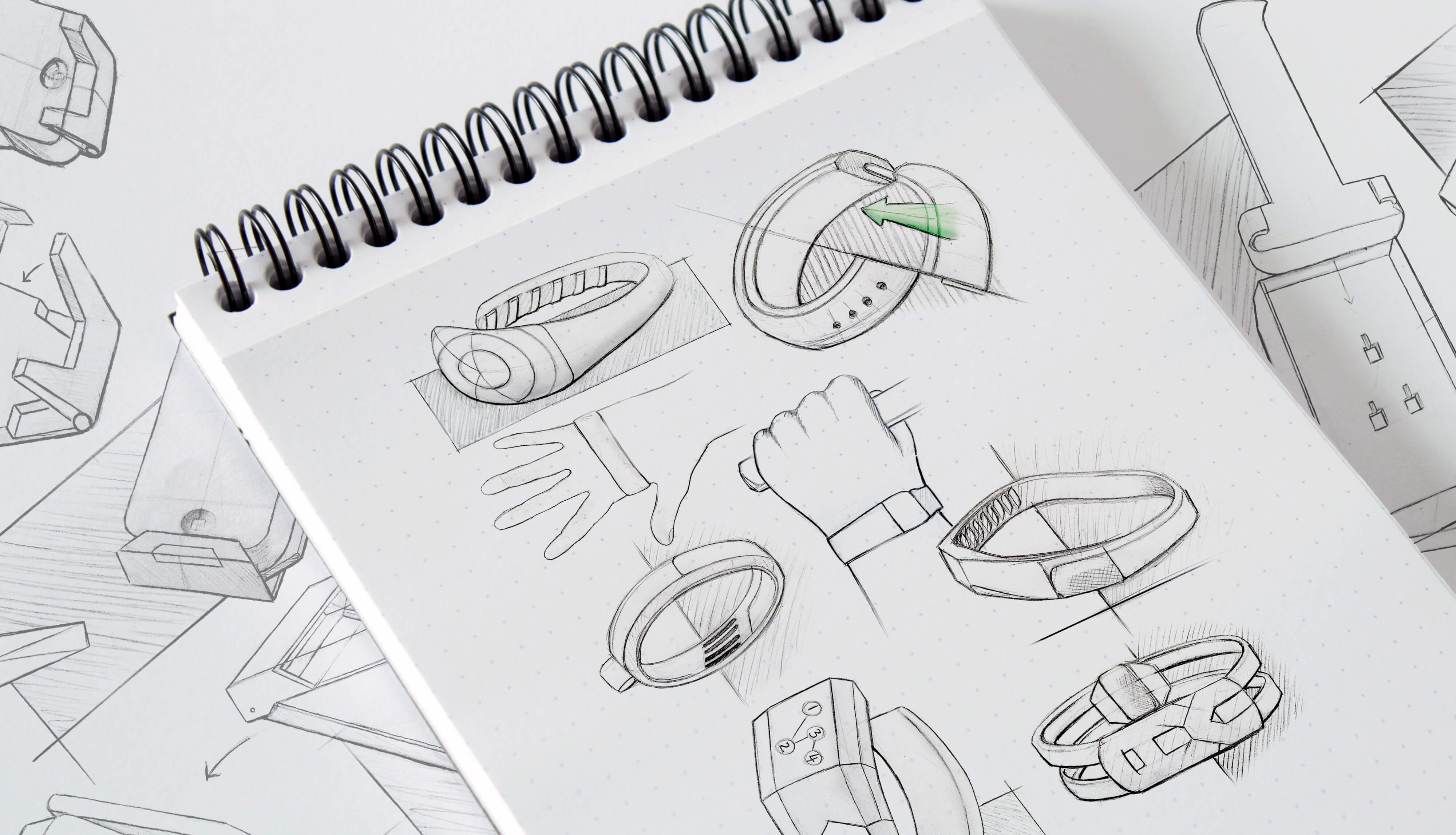
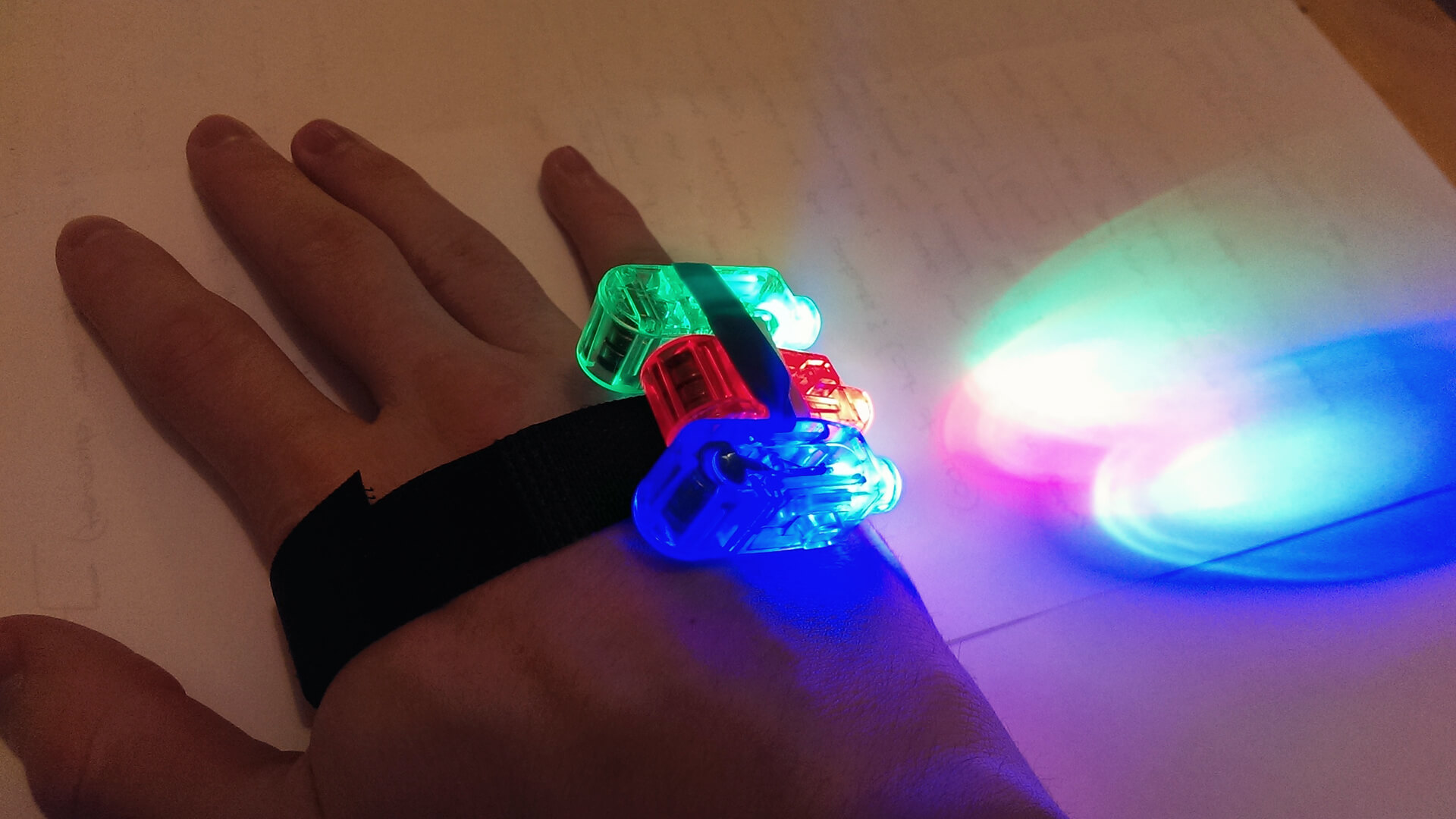
Road visibility analysis
Utilising Loughborough's car test facilities and SAMMIE CAD anthropometric modelling system, cyclist indicator visibility was modelled from different vehicles, road meeting scenarios and different indicator positions on the cyclists.
What became apparent was that handle-bar based indicators were blocked for crucial motorist viewpoints by the cyclist's own body. The best position for indicators was arm-mounted, as cyclist's already used hands to indicate, and they are positioned at the furthest widest points of the cyclist's body. Furthermore, wrists are often obscured by sleeves or baggy clothes - hands are easier to ensure that they are exposed and visible.
Road tests of an early light rig prototype helped inform the design of the light array, and showed that a wide angle of light coverage combined with a slight backwards angle tilt meant that the cyclist's arm became illuminated by the indicator, creating a large visible surface for the light.
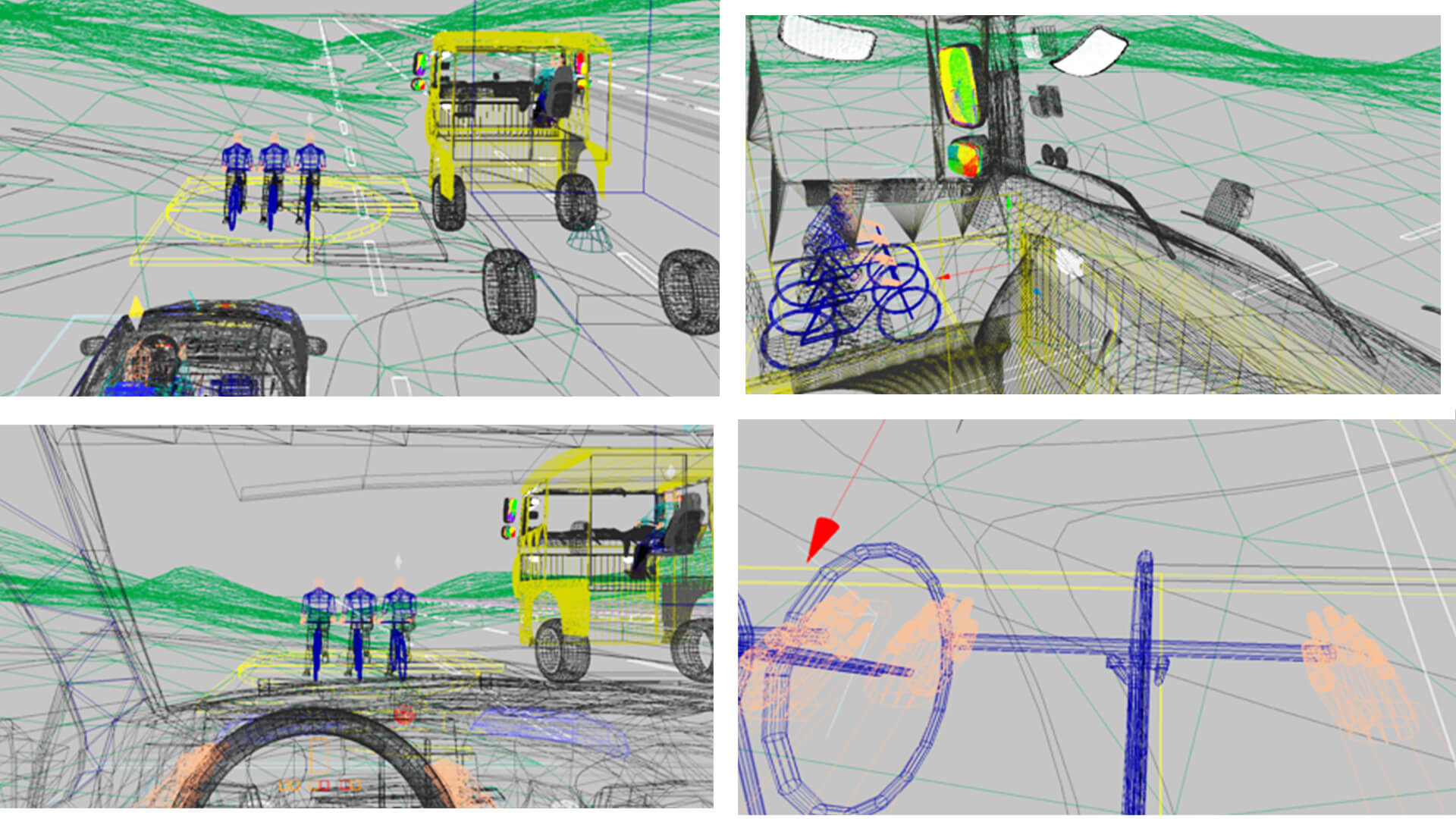

Minimising weight & duplication
Weight and bulk were high priority to reduce, in order to meet the demands of the user-group. The challenge here was that the functionality that users wanted was also quite component-heavy and power-intensive, creating a kind of size vs. function paradox.
Further ethnographies and interviews highlighted that cyclists often had a phone with them 'just in case', for day-to-day life, and for on-route use (directions or music). This insight created the opportunity to outsource some components to the user's phone via bluetooth, reducing duplication, weight and size.
Discussing this with cyclists, they demonstrated that it would be desirable to use their phones as the interface for setting up directions - meaning that they wouldn't need to learn a new system - and the wearable would simply take directional outputs from a companion app on the uer's device.
This would allow for their to be no visual interface on the wearable, other than the peripheral vision navigation feedback.
Due to the phone dependency, I also designed a companion ultra-rugged modular phone case to protect the phone in case of an incident - ensuring that it could still broadcast the cyclist's location.
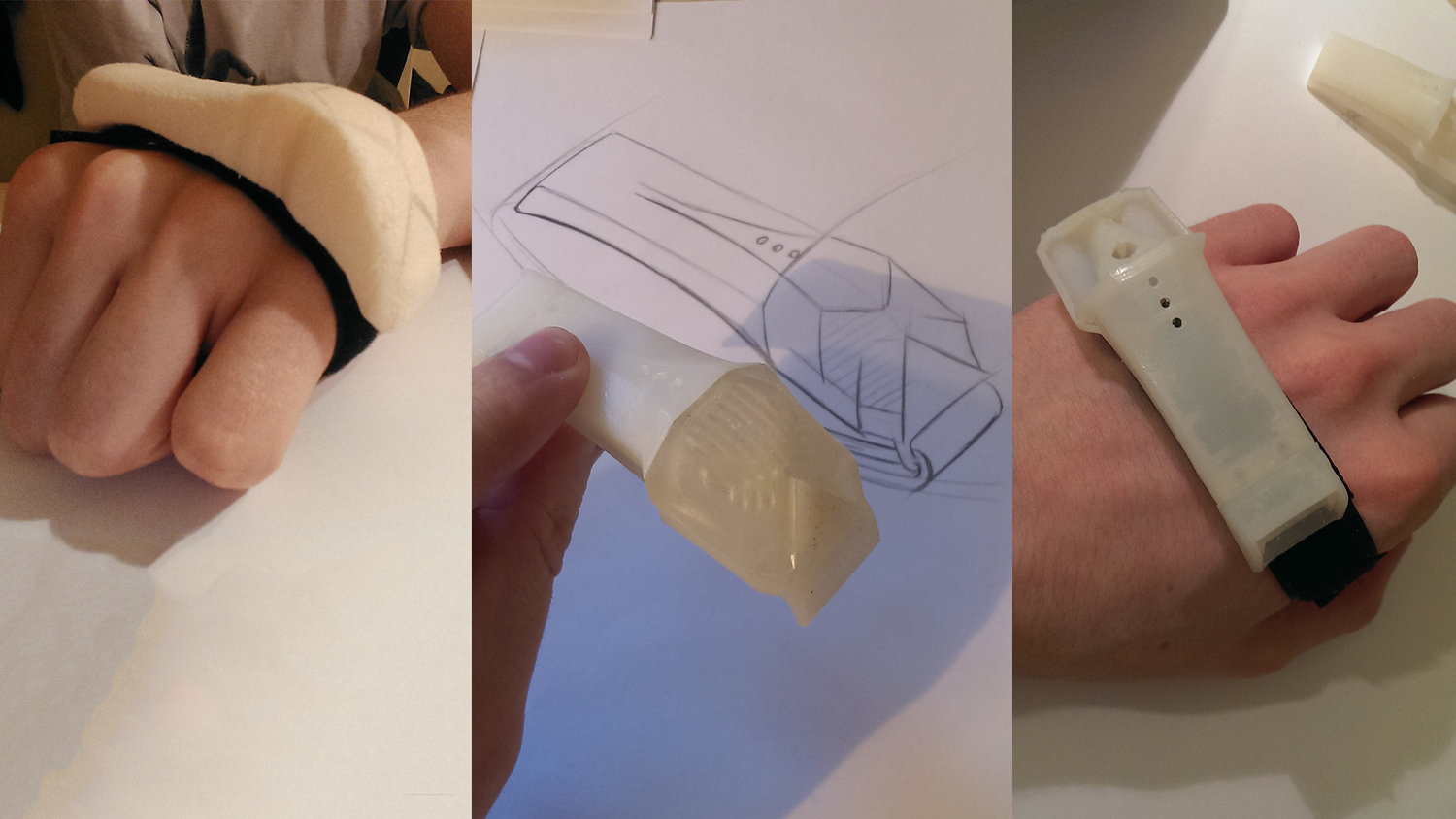 Evolution of the hand-strap
Evolution of the hand-strap
 Ultra-rugged companion phone case
Ultra-rugged companion phone case
Reactive as well as proactive
By providing a reactive response in addition to its proactive protection, the HALO product could provide a complete safety wrap.
If the product could identify when a probable incident had happened, then it could let someone know so that they could respond on the cyclist's behalf. Original consideration was linking to emergency services, but felt that the risk of false positives could be too high - instead I decided using a ICE contact to mediate would be best - letting them decide the best course of action.
From a practical perspective, the wearable was already talking to the user's phone, and already had the location of the user in order to power the navigation functionality - but needed a means of measuring normal cycling vs. 'abnormal' movement (an incident). The obvious first thought was using an accelerometer, but to reduce the noise, I also combined inputs from a pulse sensor (to measure stress/dramatic change) - if both sensors showed a sudden, simultaneous change - an alert was triggered.
This meant that should the user have an accident of any kind, we would be able to detect it.
As a further measure in moderation - the cyclist themselves could cancel false alerts in the app by pressing a single button on screen before the alert timer completed.
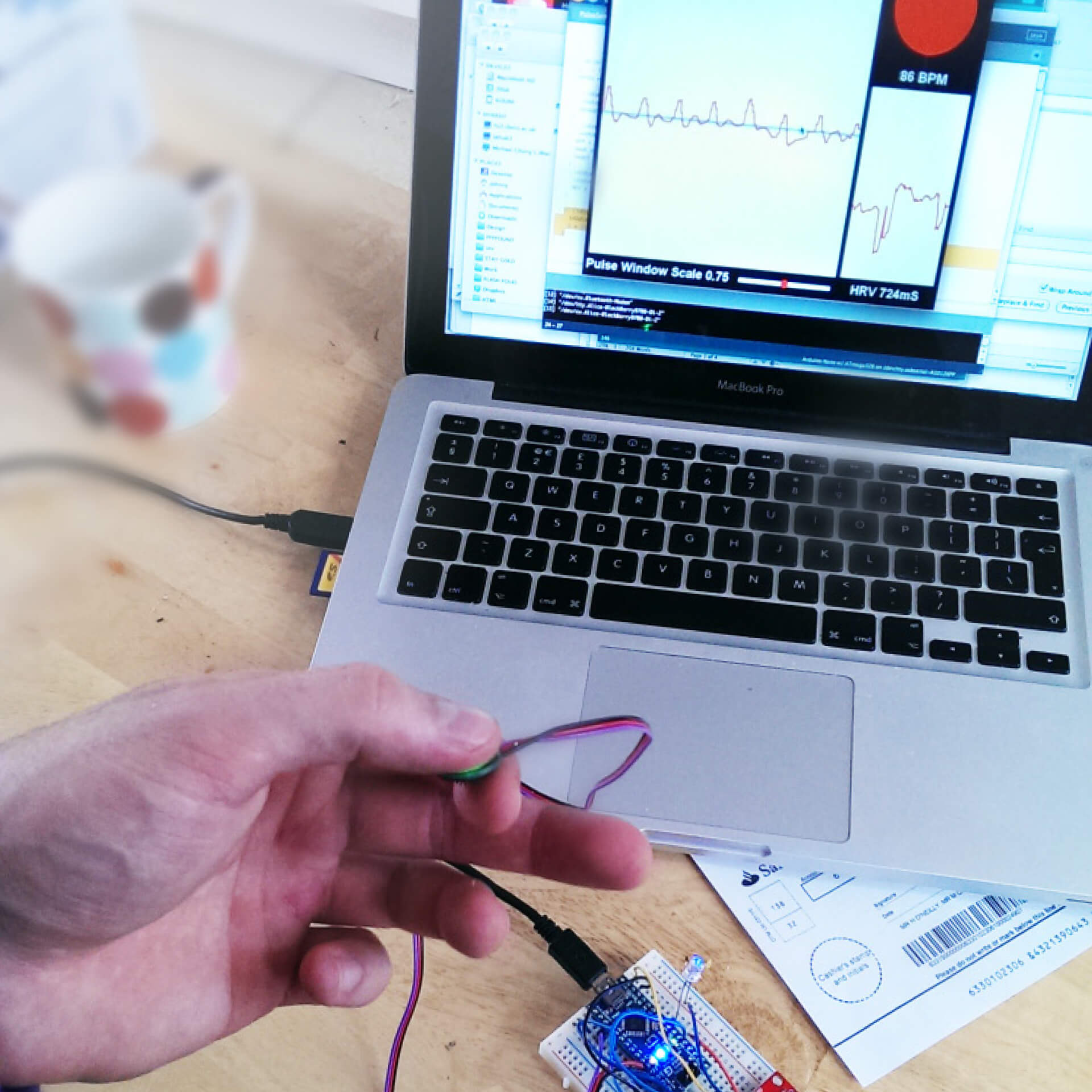 Prototyping a combined incident detection system using a 6-axis accelerometer with a pulse sensor via Arduino Nano.
Prototyping a combined incident detection system using a 6-axis accelerometer with a pulse sensor via Arduino Nano.
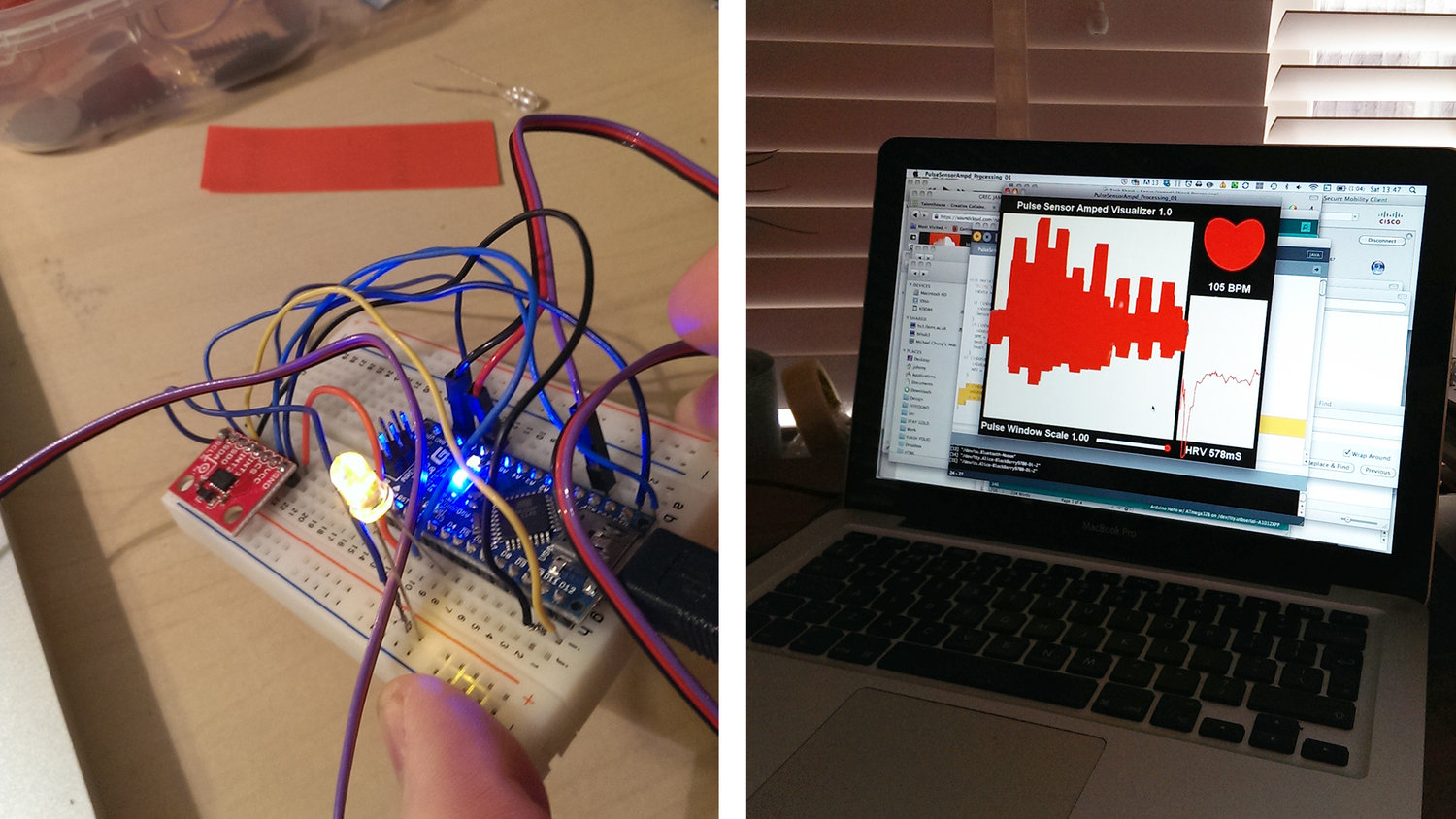
Designing for many hands - wearable interface development
Most wearables rely on the user directly looking and tapping a button on a wristband/phone - but that wouldn't work here: an interface was needed that would control the device without the user having to take their hands off the handlebars, or their eyes off the road.
After much experimenting and trial and error, it became clear that any interface mounted on the handlebars would require the user to periodically check they were positioned correctly, and would only work in certain hand positions. The interface solution would need to be on the user's fingers themselves - as the user always knows the relative position of their fingertips, so it wouldn't require any attention.
By creating an interface that can be controlled by pressing fingertips together, the user would never have to take their hands off the handlebars, or their eyes off the road.
Early prototypes of this revealed just how clunky and limiting solid components are on the movements of the fingers - and critically, fingers have huge anthropometric variation from person to person - making a commerically-viable ergonomic solution impossible; there would either have to be a large number of sizes (not viable), or a poor fit for many users (not acceptable). Lastly, it would also be awkward to put on, making continued use throughout the product lifecycle unlikely.
So, I created a new approach - an entirely fabric-based, glove interface. This would stretch and flex to the user's hand, and would be available in standard glove sizing - fitting all users. This worked by using conductive thread throughout the glove, forming different input signals when different fingertips where pressed together, and meant the interface was entirely washable - ideal for it's sport use environment.
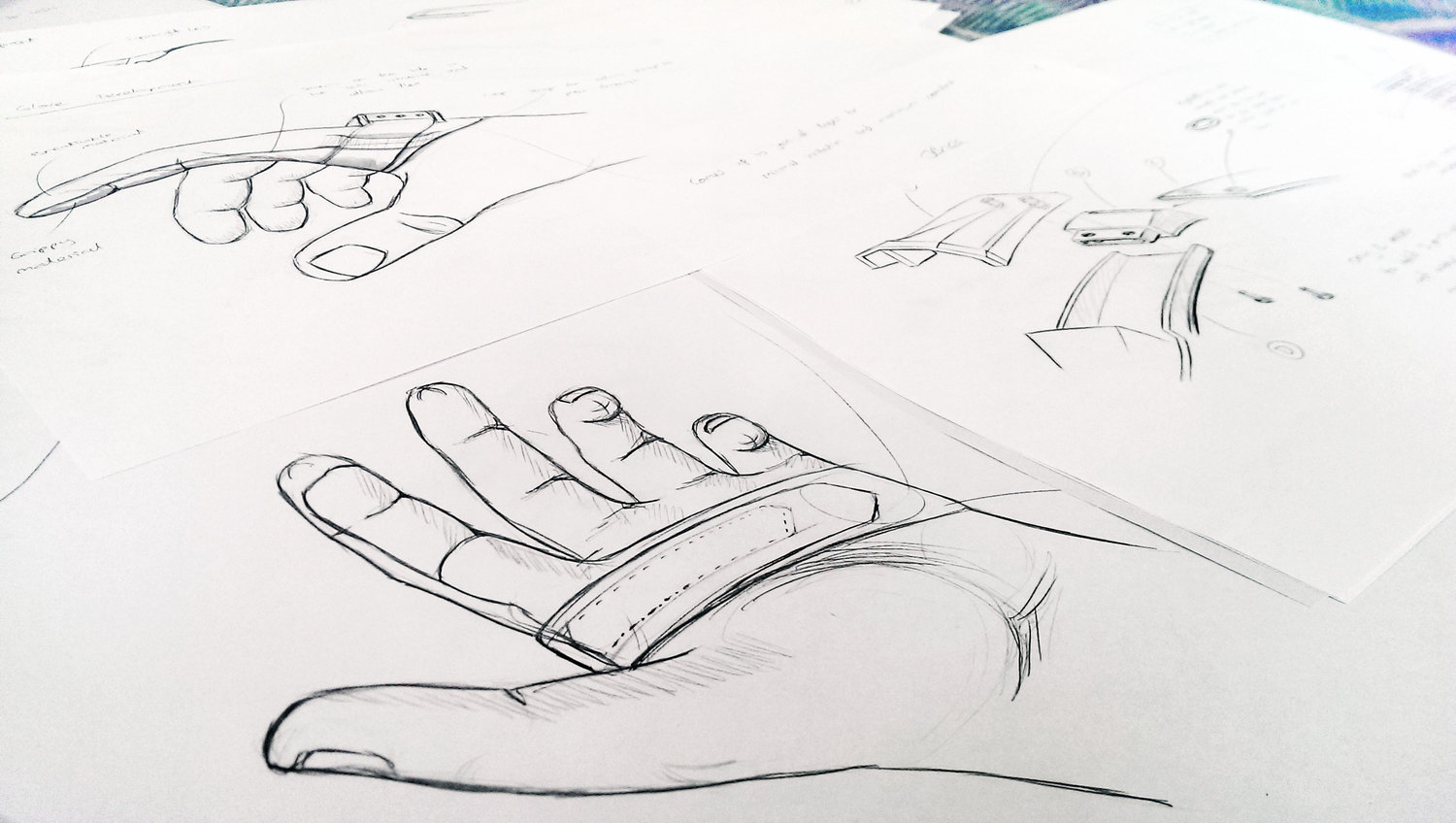
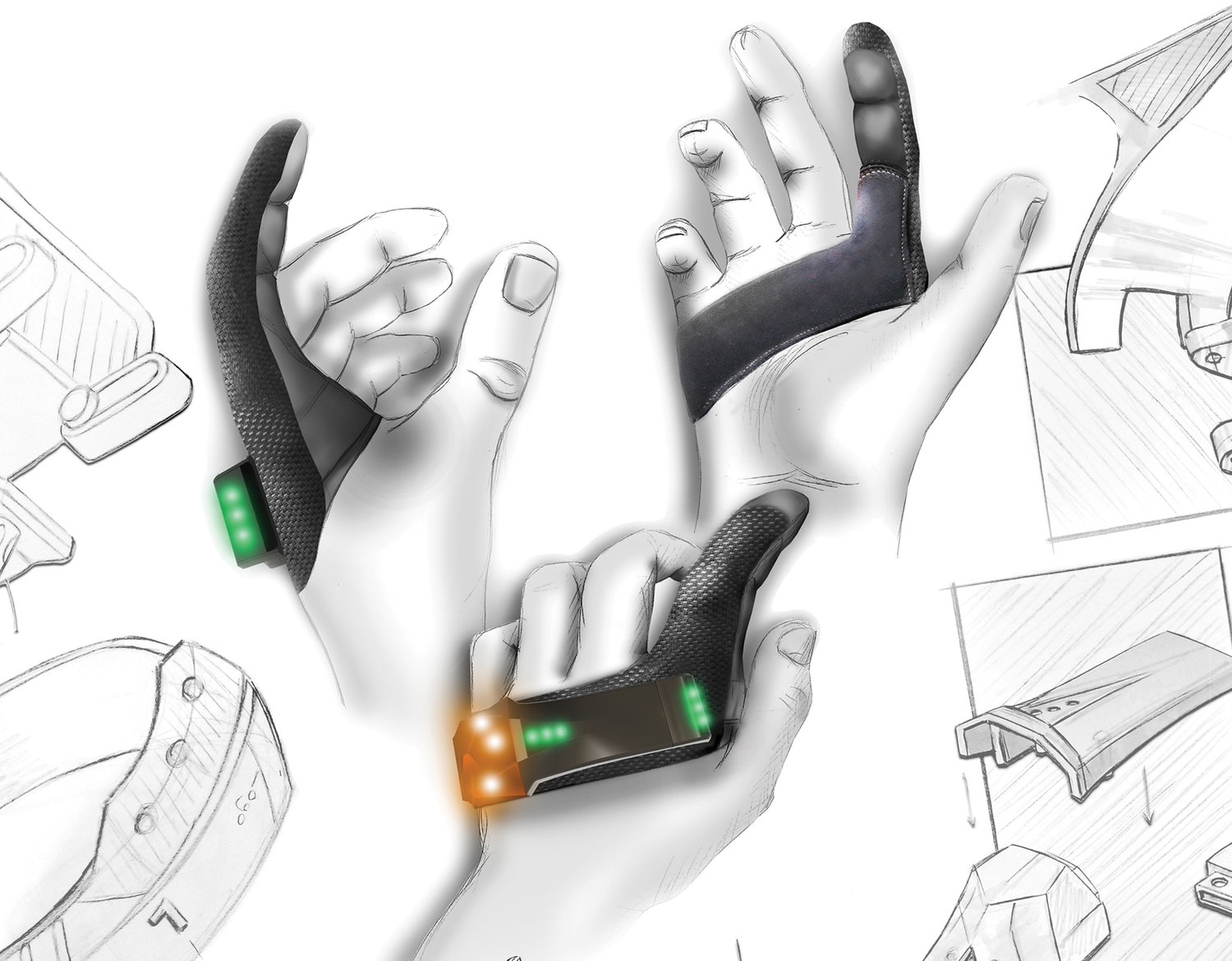
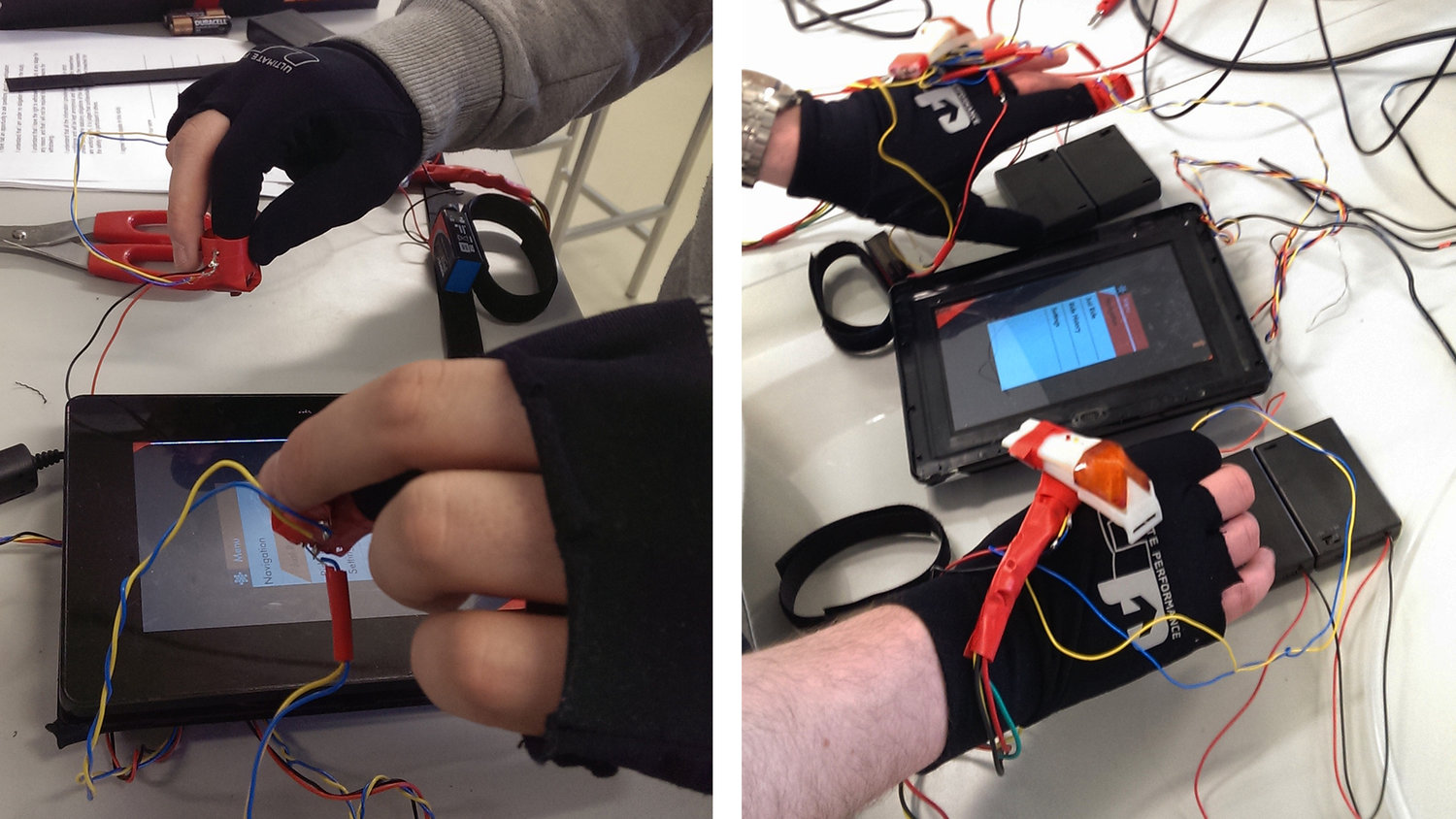 Glove interface tests
Glove interface tests
Need for a constant benefit
My research showed that all non-mandatory safety equipment suffers from usage attrition - stemming from a fallacy where users deem that an incident is unlikely to happen to them, so they don’t depend on the safety item. I worked with test users to discuss what would drive continued usage. If using the product on a regular trip, the user probably wouldn't need directional guidance, so the tangible benefit from the product drops a little (although incident detection and indicators are still present).
It turned out that sports feedback would appeal most - not unlike that from a fitness wearable, providing continuous daily benefit and motivation to wear.
By leveraging the pulse sensors and existing GPS, the HALO wearable provides fitness & sports feedback data to the user - a constant benefit, which supports highly engaged continued use, and therefore more robust protection.

The end solution was the combination of several overlapping needs, which together created a product which was richer than its individual features or components; a wearable navigation system, which would guide the cyclist on the safest route without distracting them, which would allow them to communicate their intention to turn, and which would have their back, should an accident happen (through incident detection).
The end outcome still needed further refinement, but was validated as a true & tangible visibility & safety benefit to cyclists through the indicators and navigation, & provided peace of mind with the incident detection system.
with the interface, incident detection, hand-strap & case successfully meeting pre-determined performance & ergonomic criteria.
Further areas of refinement were identified within the handstrap form factor and attachment method to glove, as well as the addition of an ambient 'always-on' light, to further increase the visibility of the cyclist, when stationary.
